The E Minor Guitar chord (often written as Em) is a foundational chord for anyone starting their guitar journey. It’s known for its melancholic yet beautiful sound and its accessibility for beginners. On this page, we’ll break down how to play the Em chord, providing clear instructions, practice tips, and insights into why this chord is so essential.
Playing the Em chord might seem daunting at first, but with just two fingers and a little practice, you’ll be strumming it confidently. Let’s dive in!
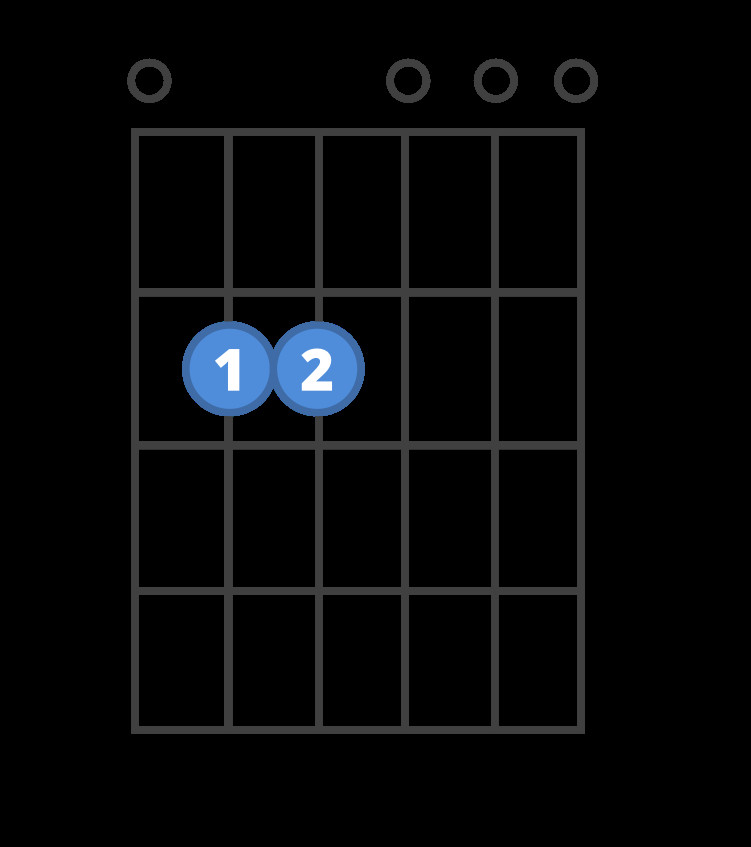 Chord diagram for the Em guitar chord.
Chord diagram for the Em guitar chord.
How to Play the E Minor Guitar Chord: Step-by-Step
The e minor guitar chord is wonderfully simple to form. Here’s a step-by-step guide to get your fingers in the right position:
- Locate the Second Fret: Find the second fret on your guitar. It’s the metal bar two frets away from the headstock (the top of the guitar).
- Finger Placement – Finger 2: Place your second finger (the middle finger) on the fifth string (A string) at the second fret. The fifth string is the second thickest string from the top.
- Finger Placement – Finger 3: Place your third finger (the ring finger) on the fourth string (D string) at the second fret. The fourth string is just below the fifth string.
- Strum All Six Strings: Once your fingers are in place, strum all six strings downwards. You should hear the rich, full sound of the e minor guitar chord.
Congratulations, you’re now playing the Em chord!
Why Use Your Second and Third Fingers for the Em Chord?
You might wonder if using your first and second fingers would be easier. While it’s possible, using your second and third fingers for the e minor guitar chord offers a significant advantage for beginner guitarists.
Leaving your first finger (index finger) free is a strategic move. This positioning makes transitions to other common chords, such as C major, A minor, and D major, much smoother and faster. These chords are frequently used together in countless songs, and having your index finger readily available will significantly speed up your chord changes and overall playing fluidity. Think of it as setting yourself up for success in your guitar journey!
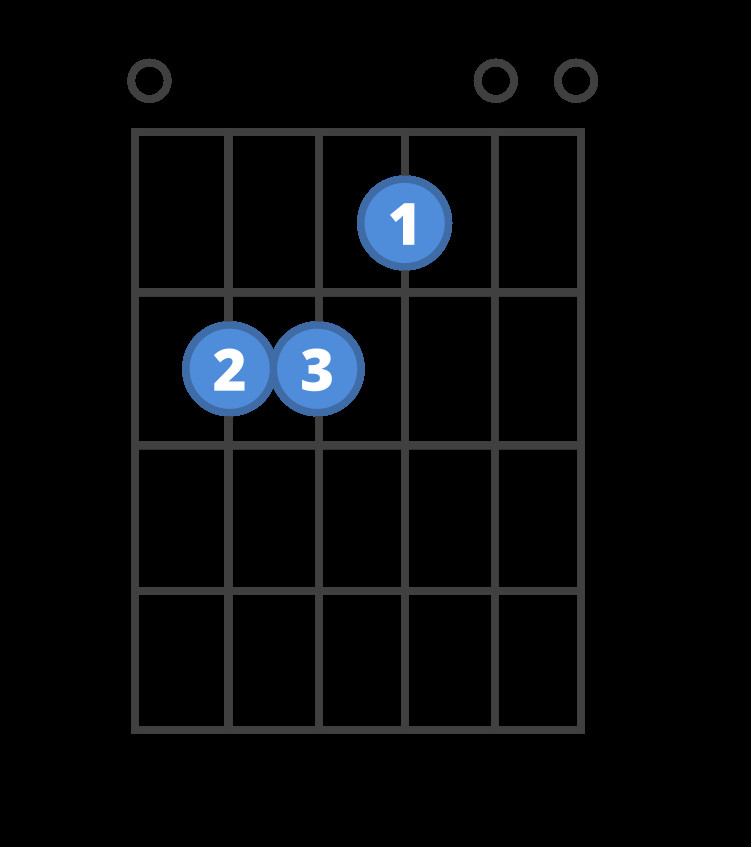 Chord diagram for the E major guitar chord.
Chord diagram for the E major guitar chord.
E Minor vs. E Major: Understanding the Difference
If you’re already familiar with the E major chord on the guitar, you’re very close to understanding e minor guitar. The difference between E major and E minor is subtle but crucial and comes down to just one finger and a shift in musical feeling.
Looking at the chord diagrams side-by-side, you’ll notice the E major chord requires an extra finger on the third string, first fret. This seemingly small change alters the musical interval within the chord.
Music Theory Briefly Explained:
In musical terms, the E major chord contains a major third interval, creating its bright and uplifting sound. The e minor guitar chord, by removing that finger and flattening that third, creates a minor third interval. This minor third is what gives the Em chord its characteristic darker, more somber, or melancholic feel. It’s a fundamental concept in music theory that distinguishes major and minor chords, and the Em vs. E major comparison is a perfect example to hear and see this principle in action.
Practice Techniques to Master the E Minor Guitar Chord
Consistent practice is key to making the e minor guitar chord sound smooth and become second nature. Here are a couple of effective practice techniques:
1. The On-Off Drill:
This simple drill is fantastic for muscle memory and building confidence in forming the e minor guitar chord quickly.
1. **Form the Em Chord:** Place your fingers in the correct position for the Em chord.
2. **Strum and Count:** Strum the chord four times, counting to four with each strum (1, 2, 3, 4).
3. **Release and Count:** Take your fingers completely off the strings for four counts (1, 2, 3, 4).
4. **Repeat:** Immediately place your fingers back into the Em chord position and repeat the strumming and releasing process.Repeating this “on-off” cycle helps your brain and fingers memorize the shape and placement of the e minor guitar chord.
2. Chord Switching Practice:
Once you’re comfortable with the on-off drill, start practicing switching between the e minor guitar chord and other chords. Good beginner chord pairings include Em with G major, C major, or D major.
1. **Switch and Strum:** Strum Em for four counts, then switch directly to a G major chord (or another chosen chord) and strum for four counts.
2. **Maintain Rhythm:** Focus on smooth transitions between chords while keeping a steady rhythm. Don't stop the beat when you switch.
3. **Repeat:** Continue switching back and forth between the two chords, gradually increasing speed as you become more comfortable.This chord switching practice is crucial for playing actual songs and chord progressions smoothly.
Play Along and Put Your E Minor Guitar Chord to Use
Ready to put your e minor guitar chord into action? Grab your guitar and try playing along with a simple chord progression using Em, G, D, and C chords. There are many online play-along tracks available, or you can simply practice transitioning between these chords in a loop (Em-G-C-D, for example).
Spending even just five minutes moving between these chords while maintaining a steady rhythm will dramatically improve your chord changes and musical timing.
Expanding Your Chord Vocabulary: Chords That Sound Great with E Minor
The e minor guitar chord is incredibly versatile and pairs beautifully with many other chords. As you continue learning, explore these chords that commonly accompany Em in songs:
- G Major: A bright and uplifting major chord that provides a nice contrast to Em.
- C Major: Another fundamental major chord that creates a pleasing and familiar progression with Em.
- D Major: A powerful major chord that adds energy and drive when played with Em.
- A Minor: A natural minor chord pairing that shares a similar melancholic quality with Em.
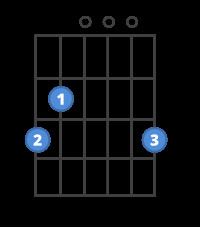 Chord diagram for the G major guitar chord.
Chord diagram for the G major guitar chord.
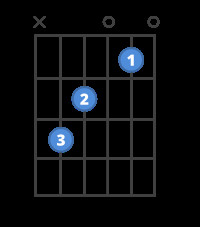 Chord diagram for the C major guitar chord.
Chord diagram for the C major guitar chord.
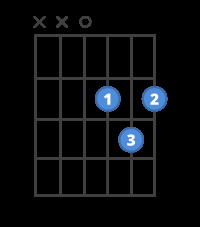 Chord diagram for the D major guitar chord.
Chord diagram for the D major guitar chord.
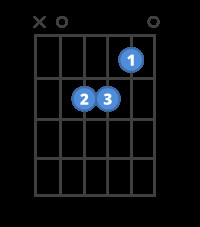 Chord diagram for the A minor guitar chord.
Chord diagram for the A minor guitar chord.
Explore More Easy Minor Chords
Once you’ve mastered the e minor guitar chord, don’t stop there! Minor chords add depth and emotion to your playing. Here are a couple more easy minor chords to learn next:
- A Minor (Am): Another essential minor chord, very similar in shape to Em.
- D Minor (Dm): A slightly more challenging minor chord, but still accessible for beginners.
 Chord diagram for the A minor guitar chord.
Chord diagram for the A minor guitar chord.
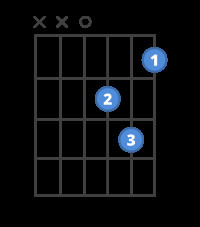 Chord diagram for the D minor guitar chord.
Chord diagram for the D minor guitar chord.
Take Your Guitar Journey Further with GuitarPlayers.net Resources
Congratulations on learning the e minor guitar chord! This is a significant step in your guitar playing journey. guitarplayers.net offers a wealth of resources to help you continue to grow as a guitarist. Explore our guides on:
- Thousands of Guitar Chords: Expand your chord vocabulary beyond the basics.
- Scales: Learn major, minor, and pentatonic scales to improve your lead playing and improvisation.
- Guitar Lessons: Take structured lessons from experienced guitar instructors.
- Metronome & Tuner: Essential tools for practicing rhythm and keeping your guitar in tune.
- Reverse Chord Finder: Discover new and interesting chords.
- Backing Tracks: Jam along to backing tracks in various keys and styles.
- Chord Saving & Flashcards: Practice and memorize your favorite chords efficiently.
Start playing the Em chord and explore more guitar resources today!

